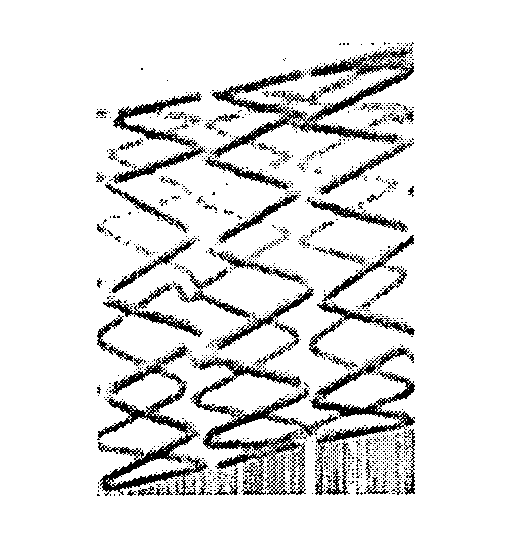Vascular stent design
a stent and vascular technology, applied in the field of radially expandable vascular stent design, can solve the problems of recurrent problems, increased risk of late stent thrombosis, death or myocardial infarction, etc., and achieve the effect of reducing or eliminating local flow disturbances, and facilitating inhibition of thrombosis and inflammation
- Summary
- Abstract
- Description
- Claims
- Application Information
AI Technical Summary
Benefits of technology
Problems solved by technology
Method used
Image
Examples
example 1
Blood Flow across the Struts is Different between Streamlined and Nonstreamlined Stents
[0090]The fluid flow domain shown in FIG. 1 was studied using CFD to better understand the effects of six streamlined and nonstreamlined stent strut geometries with varying aspect ratios, AR, in a blood vessel (FIG. 12). The coordinates on the plots shown in this section have been modified for ease of presentation without any modifications to the data. Axes corresponding to distance have been nondimensionalized by w and the location of the leading edge of the third strut has been redefined as x / w=0. In this study there is no focus on the strut-to-strut flow field variations, but on a representative case. Qualitatively the flow field about a strut is similar to that of its neighboring struts, but quantitative differences can be observed since the effects due to the presence of neighboring struts compounds as the flow travels downstream in the blood vessel. The effect is greater for thicker struts.
example 2
Pressure Field
[0091]FIGS. 4 and 5 shows the nondimensionalized pressure field in the vicinity of the struts with streamlines in the foreground. The pressure was nondimensionalized by dividing the static pressure by the dynamic pressure,
p*=p12ρU_2.
A higher pressure region is present for each case on the upstream side of the strut. The pressure gradient weakens as the height, h, decreases. The flow fields along the top surfaces of the struts experience a pressure decrease as x / w increases, but upstream of the struts the pressure increases as it approaches x / w=0. The upstream influence of the strut increases as the height of the strut increases. Since the flow studied is laminar and steady, the superimposed streamlines in FIGS. 4 and 5 correspond to the path a fluid element traveled in space. A significant recirculation region, as denoted by the streamlines, is present both upstream and downstream of the 2:1 rectangular geometry (FIG. 4a). Similar results are observed on the upstream a...
example 3
Separation Zone Cross-Sectional Area
[0092]Table 2 shows the upstream and downstream separation areas normalized by the separation area of the rectangular 8:1 aspect ratio strut. The upstream separation zones corresponding to the rectangular 4:1 and 2:1 cases, increased 3.8 and 8.4 times, respectively, when compared to that of the 8:1 aspect ratio strut. Correspondingly, the up stream separation zone for the 2:1 circular arc increased 20%. The downstream separation area increased nonlinearly from 5.7 to 42.2 times for the 4:1 and 2:1 rectangular struts, respectively. The downstream separation zone for the 2:1 circular arc increased about 14.4 times with respect to the downstream separation zone of the rectangular 8:1 aspect ratio strut, which is a significantly larger increase than the increase observed for the upstream side, but significantly lower than that observed for the 2:1 rectangular strut. The upstream separation zone for the rectangular 4:1 case is larger than that for the ...
PUM
 Login to View More
Login to View More Abstract
Description
Claims
Application Information
 Login to View More
Login to View More - R&D
- Intellectual Property
- Life Sciences
- Materials
- Tech Scout
- Unparalleled Data Quality
- Higher Quality Content
- 60% Fewer Hallucinations
Browse by: Latest US Patents, China's latest patents, Technical Efficacy Thesaurus, Application Domain, Technology Topic, Popular Technical Reports.
© 2025 PatSnap. All rights reserved.Legal|Privacy policy|Modern Slavery Act Transparency Statement|Sitemap|About US| Contact US: help@patsnap.com



